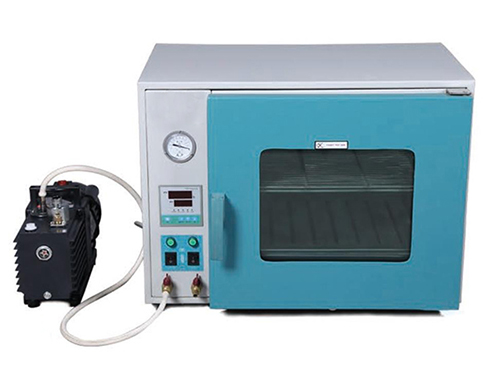Industrial Vacuum Oven Function and Operation
Industrial vacuum oven is also called industrial vacuum dryer, which is mainly heated by electricity, hot air and so on, and it uses the principle of heat conduction, convection or radiation to transfer heat from the outside to the material. Vacuum ovens are widely used in food, pharmaceutical, chemical and other industries.
Function of Industrial Vacuum Oven
Industrial vacuum oven is widely used in research fields such as biochemistry, chemical pharmaceuticals, medical and health, agricultural research, environmental protection and so on. It is used for powder drying, baking and disinfection and sterilization of various glass containers. It is especially suitable for fast and efficient drying treatment of drying heat sensitivity, easily decomposed, easily oxidized substances and complex components.
Basic principle of the industrial vacuum oven is that the pressure of water to the maximum vapor is related to the temperature. Under vacuum conditions, the boiling point of water is reduced, that is, operating under vacuum is equivalent to operating at low temperatures, which can prevent damage to nutritional vitamins and the like at high temperatures, and increase the drying speed at the same time. In a vacuum system, the content of air in a unit size is lower than that in the atmosphere. Drying food under this relatively deficient background can slow down or even prevent oxidation of fats in food, browning of pigments, or other oxidative deterioration. Therefore, using the vacuum dryer can enable to have good food quality.
Strengths of Industrial Vacuum Oven
- Vacuum drying has higher utilization efficiency. For samples that are not easy to dry, such as powder or other granular samples, using the vacuum oven can reduce the drying time.
- Industrial vacuum oven can be easily applied to heat-sensitive substances because the vacuum environment greatly reduces the boiling point of the liquid to be eliminated.
- Industrial vacuum oven is suitable for drying various mechanical parts with complex structures or other porous samples. After cleaning, vacuum drying method is used, leaving no residual material at all.
- Using vacuum oven is safer. Under vacuum or inert conditions, no thermal explosion of oxides will occur.
- Compared with ordinary oven that relies on air circulation, powder samples in vacuum oven are better controlled and will not be blown or moved by flowing air.
- Control features of industrial vacuum oven: If the data is lost in the state of power failure or crash, the device has the functions of protected parameter memory and call recovery.

Problems in Vacuum Oven Application
Drying process of the industrial vacuum oven is carried out under vacuum. In a vacuum, convective heat transfer is severely weakened. Heat transfer is mainly due to heat conduction and heat radiation from coils and box walls to the material. However, due to the low temperature, the proportion of radiation heat conduction is not large. The proportion of heat conduction is relatively large, but the contact plane of the material pan and the coil tube or the surface area of the object is small, resulting in a very poor thermal conduction effect.
Another reason is that as the material dries, the bottom surface dries and hardens to form a thermal resistance layer, which reduces the heat transfer of the coil and the material coil. The ground on the outer surface is compacted, so that the steam generated inside can not be easily discharged, which affects the drying speed. In addition, when the pressure of the bubble is so large that the impulsive soil layer is formed, the material will collapse, resulting in waste.
Solutions to Problems in Using Vacuum Oven
- Improve heat conduction. Since material pan of the industrial vacuum oven can’t prevent physical impact, and there are many protrusions on the bottom of the pan, if a flat thin steel plate is laid on the coil tube, the size of the contact plane or the surface of the object will not be very large. It is proposed to use porous metal plates to improve thermal conductivity.
- Improve convective heat transfer. According to the uniqueness of each stage, the vacuum degree of each stage is adjusted to increase the calorie transfer as much as possible.
- Damage the soil hardening surface. The formation of the material ground surface has the greatest influence on the transfer of calories and the evaporation of nutrients. Solving this problem is the top priority. The methods are: artificial damage and mechanical oscillations, which will cause auditory vibration waves.
In the experiment, it is suggested to test artificially how large the oscillation is appropriate. In actual production, it is necessary to preset the corresponding components in the drying box to achieve this goal.

